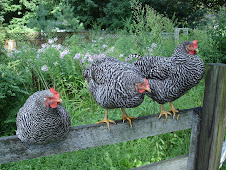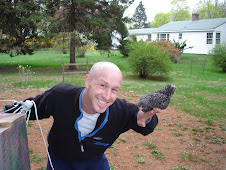Based on my planting schedule, these were next in the line up - 
 I'm actually a bit late on the celery - this is my first year trying to grow it (as with the onions), so it'll be an experiment.
I'm actually a bit late on the celery - this is my first year trying to grow it (as with the onions), so it'll be an experiment.

 I'm actually a bit late on the celery - this is my first year trying to grow it (as with the onions), so it'll be an experiment.
I'm actually a bit late on the celery - this is my first year trying to grow it (as with the onions), so it'll be an experiment.I pulled my potting soil out from the greenhouse, scrounged up a few more planting trays (which I washed throughly of course, to kill anything bad left over from last year), and got to work. I only needed a couple 6-packs of each of these vegetables, so it was an easy job. We don't eat all that much celery (mostly just in the fall in soups and stuffing), so a few plants will be more than enough. Eggplant didn't go so well for us last year. We didn't get much yield from our plants, so I'm not interested in giving them a lot of real estate in the garden this year. But I do want to give them another shot since they're yummy to eat. For the lettuce, this is just a first sowing and there will be many more throughout the season. It doesn't hold up too well in the garden and so you only want so much of it maturing at one time.
Here's the finished celery and eggplant packs -
 You'll notice the little markers labeling the rows. I haven't been able to bring myself to buy plastic markers so last year I tried popsicle sticks. Problem is - the wood got sort of moldy from all the moisture in the seeding trays - not good. So this year I knew I had to stick with plastic. I ended up using an empty milk container -
You'll notice the little markers labeling the rows. I haven't been able to bring myself to buy plastic markers so last year I tried popsicle sticks. Problem is - the wood got sort of moldy from all the moisture in the seeding trays - not good. So this year I knew I had to stick with plastic. I ended up using an empty milk container - 
I washed it thoroughly and then cut it up into nice little seed markers. Recycling at it's best. Joe was proud.
In case you're wondering how I came up with my planting schedule - it's partly from the seed packet instructions, but also from my very favorite planting book -

What I love so much about this book is that he has it organized by month. You could pick it up at any point during the year, and know what vegetables you could be starting right then. Plus, seed packets only tell you when you can FIRST plant the vegetable. But for a year round harvest, you should actually be making several sowings of a lot of vegetables - for example you can plant peas and beans in the late summer for a fall harvest! This guy knows how to make the most of a garden, which is important if you're trying to feed your family year round.
Oh, but if you do read his book - ignore his soil and pest management techniques. They're outdated and well, not organic. Otherwise, the man's got a lot to offer.












I ma so proud of you both! I love the updates! The new sprouts are exciting. It is so great that you are so committed to planting and growing your garden and your future! I love and miss you guys!!!
ReplyDelete